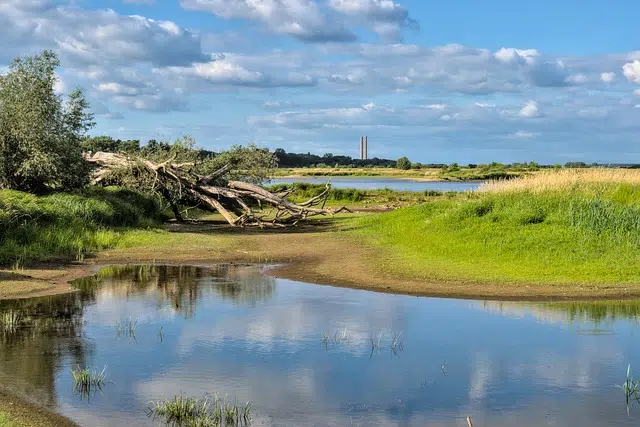
When the water flow reaches its lowest point, it is called low water.
The lowest flow rate that a watercourse has at one time of the year is known as low water flow . With etymological roots in the French word étiage , dryness is mainly caused by drought .
Description and causes
It can be said that the low water level is the lower level of a lake , a river , etc. The concept is also used with reference to the period during which this situation extends.
In general, the dry season is due to a lack of precipitation . In the driest season, rains are infrequent and, thus, the flow is reduced. Another factor that affects dryness is sunshine : the sun's rays cause water to evaporate.
Preventive measures
People can help minimize the consequences of dry weather by using water responsibly . Not wasting this resource is essential to preserve the planet . One way to reduce water consumption is to learn to reuse it; Although this cannot be done in all cases, we have many possibilities:
* there are certain foods that can be boiled one after another;
* If we wash clothes by hand we can also rinse several clothes in the same load;
* We can use the boiled water left over from an infusion to wash the dishes.
With respect to saving itself, to responsible use, the following measures can make an important difference in the fight against dry weather: taking short showers; turn off the faucet (or faucet) when brushing your teeth and hands; repair losses (or leaks) as soon as we detect them; wash the car with a bucket and sponge, instead of running water with a hose. These practices should be essential throughout the year, although they become even more relevant during the dry season.
The storage of water, especially for drinking, must be done in containers in excellent condition, which meet current health requirements. For example, it must be made with materials approved for this purpose, which do not cause any type of contamination. High-density polyethylene is ideal for this, since it allows the conservation of all the chemical properties of water without any alteration, in addition to its flavor, aroma and color.
Consequences
It is important to keep in mind that low water levels, when linked to an insufficient amount of water to satisfy human needs, threaten the quality of life and development of people. Depending on socioeconomic characteristics, it can even cause famine and force mass migration .
Suppose that a rural community lives from agriculture and livestock . If the dry season lasts too long, the animals cannot find water to drink and irrigation becomes difficult. This reduces food production. That is why it is vital that these people take care of the water and look for mechanisms to reduce the dryness.

We can prevent dry water by saving and reusing drinking water.
In parts of the world whose lands are not particularly fertile, dry periods have a considerable impact. If it is already difficult to maintain the plantations under favorable humidity conditions, a drought can be devastating, both for a company and for an individual who wants to have their own garden.
Beyond planting, hygiene and hydration, there are other areas in which we notice the negative consequences of dry weather. For example, when the land dries out and burns after months without rain, the air becomes more harmful to the respiratory system and larynx. Those people who spend many hours working in the fields should try to drink more water to protect this aspect of health that is often not given the importance it has.
